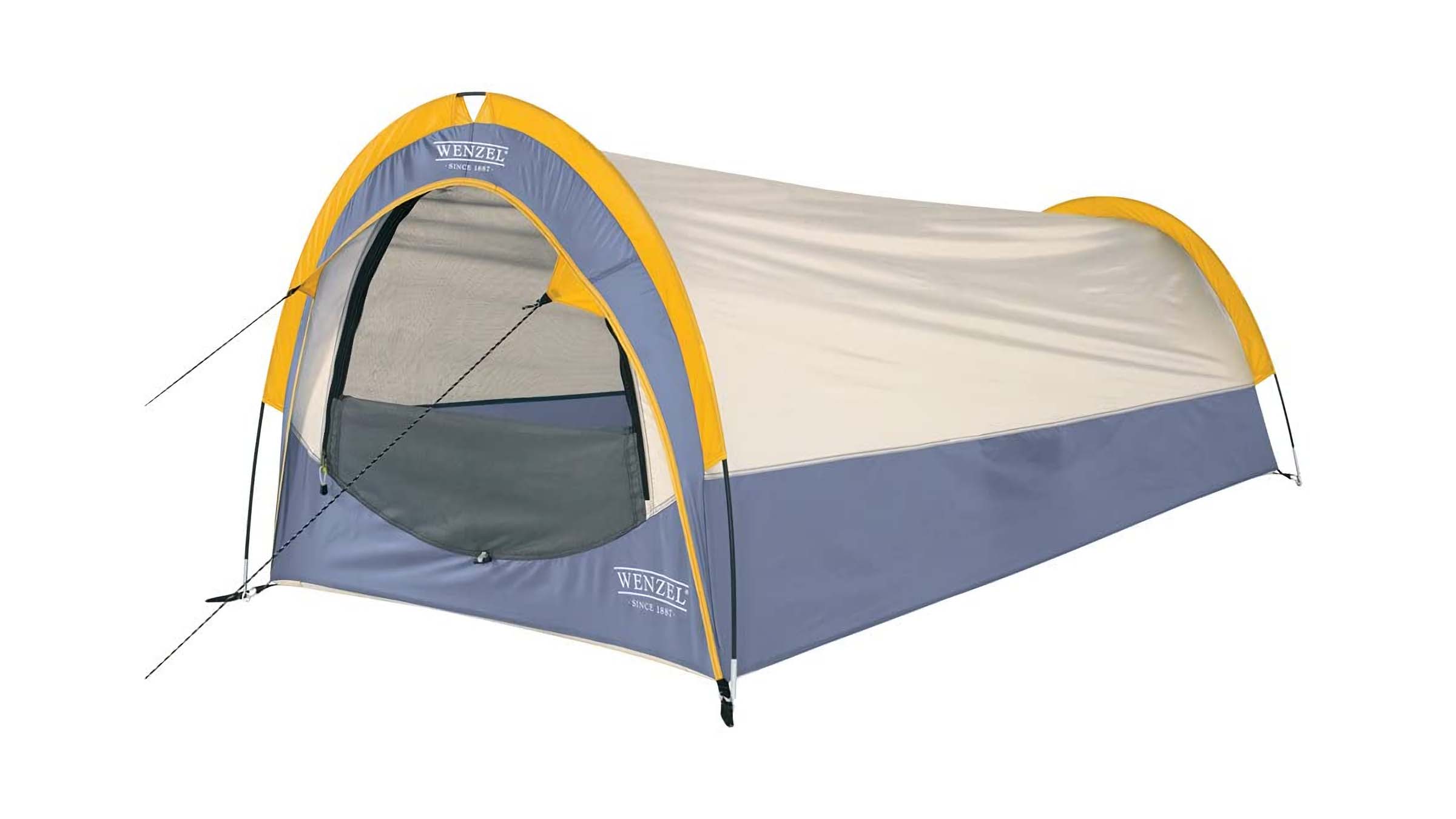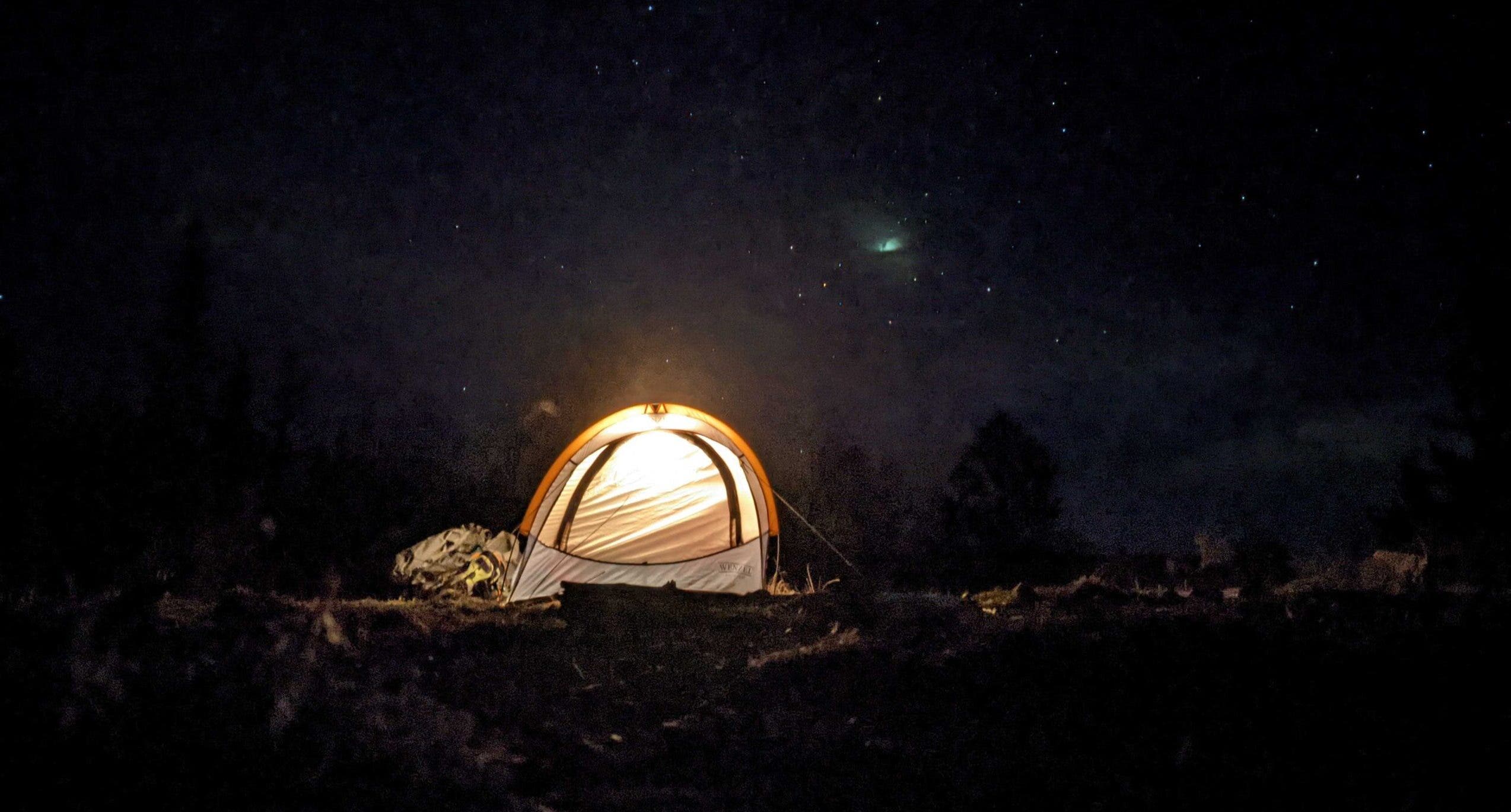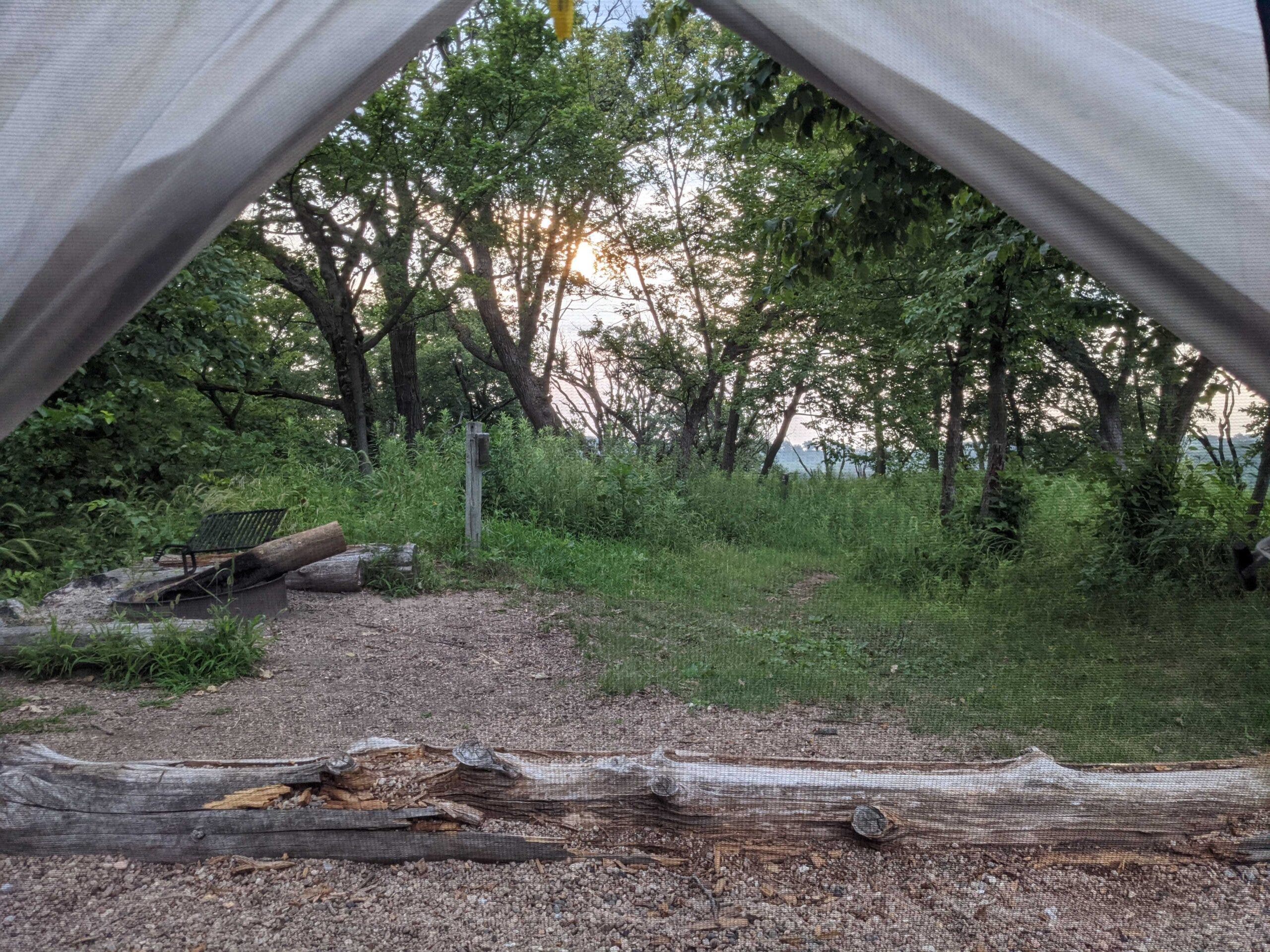My Favorite Tent Cost $30, and Yours Might Too

(Photo: Courtesy)
Over a decade editing outdoor magazines, I’ve amassed a collection of tents that covers just about every niche. I have a gossamer ZPacks Duplex and MSR Freelite 1 for fast-and-light adventures, a sturdy two-person model from Fjallraven that’s made to stand up to mountain weather, and a The North Face Homestead Domey 3 for car-camping adventures with the family. But these days, more often than not, I find myself packing a $30 tent that I bought almost 15 years ago instead.
When I ordered my Wenzel Lone Elk, I was in my early twenties and strapped for cash: “How cheap can I buy it?” was the big question I asked myself when I shopped for outdoor gear. Even back then, this wasn’t a top-of-the-line tent. The solo shelter sets up with two fiberglass brow poles and four guylines, which you have to stake out meticulously unless you like feeling like you’re napping inside a collapsing parachute. Even when it’s pitched perfectly, the Lone Elk has a tendency to ripple in the wind. When it rains, or it’s too cold to sleep with the head and foot vents open, bumping the walls has a tendency to send a sprinkle of moisture tumbling down.
But over the past ten years, when I’ve needed a tent, I’ve regularly reached for this budget one. Inside this tent, I’ve slept off a trail race in a dusty Moab canyon and weathered a thunderstorm during a weekend trip on the Continental Divide Trail. It has been with me on solo backpacks through the Nebraska sandhills and backcountry skiing trips to Colorado’s Weston Pass. It needs a little love from time to time—I’ve sealed the seams and replaced about half the stakes after bending or losing them—but in terms of nights per dollar, it towers over the other shelters I own.

Even now, with nicer tents in my closet, the Lone Elk has a special place in the lineup. It may not be the best at anything, but it’s good enough at almost anything. At 3 pounds, 13 ounces, it’s more than twice the weight of my lightest tent, but it’s still light enough to add to a heavy winter pack. Its poles are fiberglass, not aluminum, and thinner than a pencil, but even in heavy wind they haven’t broken yet, so they’re strong enough. The single-wall design vents condensation and the at-home sealed seams keep out seepage in the rain well enough. And a $30 tent is very appealing when you don’t know where you’re going to make camp for the night: I’ve pitched it on sharp rocks and goatheads and left it to the mercy of my hyperactive Chihuahua’s nails, and I’ve never worried about wrecking it.
Gear reviews, including Backpacker’s, usually focus on the latest and greatest, and there are definitely situations where I want to sleep in a more high-end tent. I appreciated my gossamer ZPacks shelter while hauling water through Arizona’s Saguaro National Park, and was glad to be sleeping in Mountain Hardwear’s sturdy AC3 as wind gusts buffeted me on a glacier in Banff.
But when we pooh-pooh cheaper gear just because it can’t stand up to the nice stuff, I think we underestimate the power of “good enough.” Most of our trips won’t hit climatic extremes or test our endurance to the point where a pound or two will make much of a difference to our enjoyment of it; for people who might not be able to handle the sticker shock of a brand-name tent or pack, a cheaper version can unlock those 80% of trips. Try it, and you just might be surprised at how far it can take you.
Buy Your Own Cheap Tent

The Lone Elk is long gone from the market, but Bass Pro Shops sells an A-frame solo tent with a similar pitch and weight for $30. For 3 pounds and $30 more, the Sierra Designs Crescent is a comfortable-enough 2-person double-wall tent with an easy pitch. (For this price, you only get one door, and ventilation that’s just OK.) Feeling adventurous? Amazon teems with manufacturer-direct pup tents; it can be hard to tell how each performs without having it in hand, but at $30, it’s a cheap bet.
Tips for Buying Cheap Gear at a Big Box Store or Online
Know where to save your money and where to spend it. Whether or not you can go cheap depends largely on what category you’re shopping for. Some store-brand gear, like canister stoves and cookware, performs almost as well as the good stuff. Some is abysmal: Go backpacking in a cheap pair of shoes or boots and you’re likely to end your trip with your outsoles flapping off, your feet covered in blisters, or both. Tents, backpacks, and apparel occupy a middle ground: Read reviews, look closely at the construction, and keep your expectations in check.
Start small. Take a few easy trips with your new gear as you figure out what its capabilities are. Spend a night car camping with your new tent, or wear your jacket to shovel snow. Plan a few overnights or weekend trips before heading deep into the backcountry. This will both let you learn about your gear’s foibles in a safe environment and figure out what changes you might need to make to it or your packing strategy.
Waterproofing is your friend. Budget gear manufacturers often cut corners, and for tents, a common one is to leave the seams unsealed, giving moisture an easy entrance into your sleeping quarters. Luckily, this is one of the easiest to fix: A tube of Gear Aid Seam Grip runs about $8 and has enough to make a couple of tents watertight. Just paint it over the threads and let it dry for 24 hours. Waterproofing on the fabric can be hit-or-miss, too. It’s not a bad idea to give it a spritz with a spray-on DWR treatment, like NikWax’s TX Direct Spray-On.